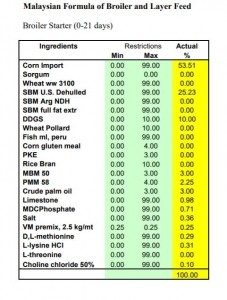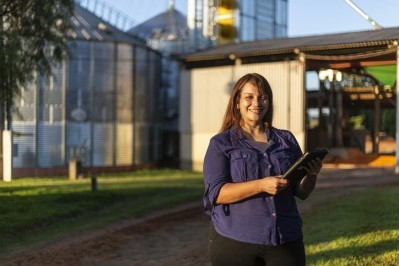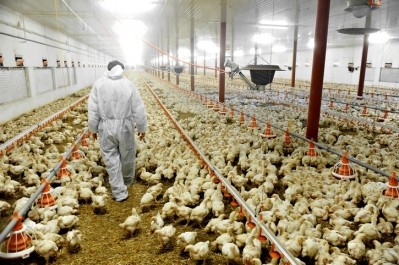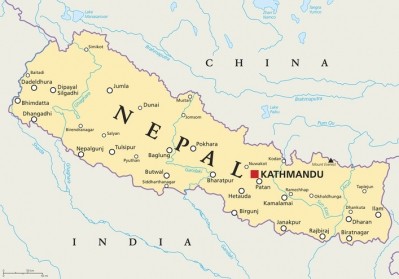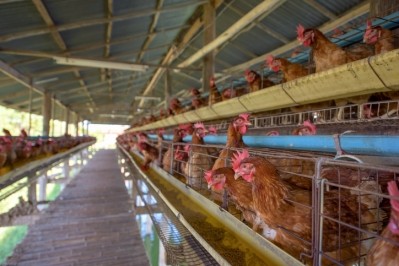Malaysia looks to cut back on poultry feed imports

The country’s farming minister, Datuk Seri Ahmend Shabery Cheek, speaking at the opening of Livestock Asia 2018 last week, said the domestic poultry industry was heavily reliant on imported feed, reported The Malaysia Reserve.
He suggested higher use of palm kernel cake in chicken rations, along with increasing local corn cultivation for feed use, combined, could reduce the country’s dependency on imported feed by around 30% to 40% and could help put a lid on escalating feed costs.
The minister said the country would need between 300,000 and 400,000ha of land to cultivate corn for livestock feed, according to an article on Malaysia media outlet, The Star, last year.
The Malaysian poultry sector is buoyant, with self-sufficiency of poultry products at 125%, said the minister.
“The poultry segment is the fastest growing, followed by fishery products which is almost reaching 100% of self-sufficiency; meat products is still low at around 20%, while dairy products is around 50%. There is still room of improvement in our industry,” said Ahmad Shabery.
There could be a greater push on chicken meat and egg exports, added the minister.
“We export only poultry products and eggs — around 20% from the 125% — and only to neighboring countries, for example, Singapore. We should produce and export more as trade can strengthen our currency.”
Malaysia has 45 feed mills producing 4.4 million metric tons of feed annually, according to the Alltech global feed survey 2018. Broiler and layer feed dominates.
Feed innovation
Last year, a Malaysia developer of a new highly refined feed targeted palm kernel cake product claimed, at its launch, that the product had the potential to transform the Malaysian market.
“It is a game changer not only for the palm oil industry, but also for the poultry, aquaculture and agribusiness sectors [in Malaysia],” Mohd Haris Mohd Arshad, head of global trading and marketing, Sime Darby Plantation, told us last May.
He said the product, branded as Purafex and produced from a Roundtable for Sustainable Palm Oil (RSPO) certified source, would reduce soy and corn imports and bring down the cost of feed, along with playing a role in the country’s food security efforts in the context of Malaysia’s growing population, forecast to reach more than 33 million by 2020.
The palm kernel expeller is a by-product created during the palm kernel crushing process at Sime Darby Plantation’s Carey Island Kernel Crushing Plant in Klang.
“The main ingredient of animal feed [in Malaysia] is maize, which is imported from abroad. In 2015, Malaysia imported maize from Argentina and Brazil to the tune of US$415m and US$321m respectively to support the livestock feed manufacturing sector. The volume of such imports will continue to increase unless we reduce the maize component in feedstock production. The cost of soy meal and maize is three times higher than the cost of Purafex/palm kernel expeller.
“With Purafex, we now can replace at least 30% of feed content with palm kernel cake (PKC). The use of about 30% locally produced components like PKC in the manufacturing of animal feed will provide savings of more than 10% or around RM180 per ton of chicken feed cost.”
US corn imports to Malaysia forecast to grow
There is no commercial corn production for feed in Malaysia, according to the latest USDA gain report on that country’s feed and grain sectors.
“Most corn produced in-country is sweet corn for human consumption. Corn is planted in rotation with other plants such as banana, sweet potatoes, pineapple and watermelon to complement farmer income.
“Based on data by the Malaysian Agricultural Research and Development Institute (MARDI), cost of production was US$225.00 per ton in 2016. With strengthening corn prices, appreciation of Malaysian currency relative to the US dollar, improved standards of living and greater popularity of poultry meat among different races in Malaysia, demand for corn are forecast to slightly increase in line with demand for poultry.”
Malaysia imports most of its corn from South America.
“Even so, limited transportation in Brazil with poor road connectivity and vulnerability to weather disruption will see some Malaysian feed millers switch to US corn to avoid interruption in supply,” said the US agency publication.
